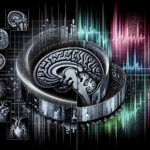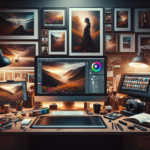In the digital era, visual content has become a powerful tool to engage and captivate audiences. Web galleries stand out as one of the most effective ways to showcase such content, transforming simple webpages into immersive visual experiences. Whether you are a photographer, an artist, or a business owner, mastering the art of creating stunning web galleries can significantly enhance the appeal of your website. This article will explore essential tips and techniques to help you create compelling web galleries that leave a lasting impression on your visitors.
1. Understand Your Audience
Before diving into the technical aspects of web gallery creation, it is crucial to understand your target audience. Consider the demographic characteristics of your audience, such as age, interests, and preferences. Understanding what captivates your audience will guide your decisions on the type of content to include, the style of your gallery, and the overall user experience.
2. Choose the Right Platform
The next step is to choose the right platform to host your web gallery. There are several platforms available, each with its unique features:
- WordPress: A versatile platform with numerous plugins and themes specifically designed for creating web galleries.
- Adobe Portfolio: Ideal for creative professionals looking to highlight their work with a professional touch.
- Squarespace: A user-friendly platform with sleek, modern templates perfect for visual content.
Select a platform that aligns with your level of expertise and the functionality you require.
3. Optimize Your Images
High-quality images are the backbone of any stunning web gallery. Here are some tips to optimize your images:
- Resolution: Ensure your images have sufficient resolution to appear sharp and clear on various devices, but not so high that they slow down your website.
- File Format: Use web-friendly formats such as JPEG for photographs and PNG for images requiring transparency.
- Compression: Use image compression tools to reduce file sizes without sacrificing quality.
Optimized images enhance the loading speed of your gallery, improving the overall user experience.
4. Design with Aesthetics in Mind
The visual design of your web gallery is critical in capturing your audience’s attention. Pay attention to the following design elements:
- Layout: Choose a layout that complements your content. Grid layouts, for example, are great for displaying multiple images, while carousel layouts can highlight individual pieces.
- Color Scheme: Use a cohesive color scheme that aligns with your brand and enhances the aesthetic appeal of your gallery.
- Typography: Select fonts that are readable and match the style of your gallery.
Consistency in these design elements creates a visually pleasing and cohesive gallery.
5. Implement Navigation Features
Effective navigation features are essential to ensure a seamless user experience. Incorporate the following navigation elements in your web gallery:
- Thumbnails: Thumbnails provide a preview of the images and allow users to browse through the gallery quickly.
- Arrows and Sliders: Arrows and sliders help users navigate through different sections of the gallery.
- Search Functionality: A search bar enables users to find specific images or categories within the gallery.
Good navigation improves the usability of your gallery, making it easier for visitors to explore your content.
6. Leverage Interactivity
Interactivity can elevate the user experience by engaging your audience and encouraging exploration. Here are some interactive elements to consider:
- Lightboxes: Lightboxes allow users to view larger versions of images in a popup window, without leaving the main gallery page.
- Hover Effects: Hover effects add a dynamic touch by highlighting images or displaying additional information when users hover over them.
- Click-to-Zoom: Enable a click-to-zoom feature for users to examine intricate details of your images.
Interactive elements make your gallery more engaging and memorable.
7. Ensure Mobile Responsiveness
In today’s mobile-first world, ensuring your web gallery is mobile responsive is paramount. Here are some tips to achieve mobile-friendliness:
- Responsive Design: Use a responsive design framework that adjusts the layout to fit different screen sizes.
- Touch-Friendly Navigation: Ensure navigation features are easily accessible on touchscreens.
- Fast Load Times: Optimize images and other elements to minimize load times on mobile devices.
A mobile-responsive web gallery ensures a positive user experience across all devices.
8. Include Descriptions and Metadata
Providing descriptions and metadata for your images can add context and improve the discoverability of your content. Consider the following:
- Image Titles: Use descriptive titles that reflect the content of the images.
- Alt Text: Include alt text to describe images for accessibility and SEO purposes.
- Captions: Add captions to provide additional information or tell a story related to the images.
Effective use of descriptions and metadata enhances the presentation and accessibility of your gallery.
9. Monitor Performance and Gather Feedback
Monitoring the performance of your web gallery and gathering feedback from users can help you make necessary improvements. Consider the following strategies:
- Analytics: Use web analytics tools to track user behavior, such as time spent on the gallery and interaction patterns.
- User Feedback: Collect feedback through surveys or comment sections to understand user preferences and areas for improvement.
Continuous monitoring and feedback help you refine your gallery to better meet the needs of your audience.
Conclusion
Creating stunning web galleries is an art that combines technical skills, creativity, and a deep understanding of your audience. By choosing the right platform, optimizing your images, designing with aesthetics in mind, implementing effective navigation, leveraging interactivity, ensuring mobile responsiveness, including descriptions and metadata, and continuously monitoring performance, you can create web galleries that are not only visually captivating but also highly functional and user-friendly. Mastering these elements will set your web galleries apart, making them a compelling showcase for your visual content.
FAQs
1. What is the best platform for creating a web gallery?
The best platform depends on your needs and expertise. WordPress offers versatility with numerous plugins, Adobe Portfolio provides a professional touch for creatives, and Squarespace is user-friendly with sleek templates.
2. How can I ensure my web gallery loads quickly?
To ensure fast loading times, optimize your images by adjusting their resolution, using appropriate file formats, and compressing them. Additionally, choose a reliable hosting provider and leverage caching techniques.
3. Why is mobile responsiveness important for web galleries?
Mobile responsiveness is crucial because a significant portion of users access websites from mobile devices. A mobile-responsive gallery ensures a positive user experience across all screen sizes, increasing engagement and retention.
4. How can I make my web gallery more engaging?
You can make your web gallery more engaging by incorporating interactive elements such as lightboxes, hover effects, and click-to-zoom features. These elements encourage users to explore and interact with your content.
5. What role do descriptions and metadata play in a web gallery?
Descriptions and metadata provide context to the images, improve accessibility, and enhance SEO. Descriptive titles, alt text, and captions make your content more discoverable and informative for users.










